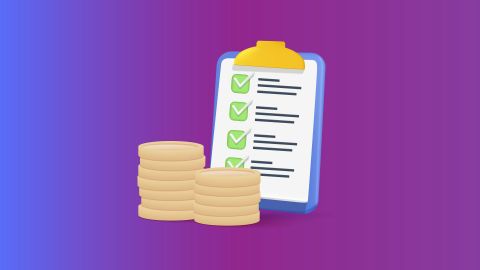Poultry farming has emerged as a lucrative venture, offering a sustainable source of income and contributing significantly to the global food industry. A well-structured business plan is crucial for success in this competitive sector, outlining key aspects such as market analysis, production strategy, financial projections, and risk management. Moreover, securing adequate funding is vital, and one promising avenue is opting for a Bajaj Finserv Business Loan.
In this article, we will provide a guide to developing a poultry farming business plan and why you should opt for a Bajaj Finserv Business Loan to finance your business.
What does the poultry farming business entail?
The poultry farming business involves raising domesticated birds such as chickens, ducks, turkeys, and geese for meat and eggs. It includes selecting appropriate breeds, constructing and maintaining housing, providing feed and water, managing health and hygiene, and ensuring biosecurity to prevent disease outbreaks. Farmers must also manage breeding, hatching, and rearing of chicks. The business requires knowledge of animal husbandry, marketing, and sales to distribute products. Additionally, compliance with local regulations and sustainability practices is essential for successful operations. The goal is to produce high-quality poultry products efficiently and profitably.
Developing a poultry farming business plan
A poultry farming business plan is a comprehensive outline of how the business will be run. From market analysis and operations plans to financial projections and strategies for growth, a business plan is essential for laying the groundwork for a successful poultry farming venture.
Key Components of Poultry Farming Business Plan
Here are some key components to include in a poultry farming business plan:
Market analysis
The market analysis should identify the target audience, assess existing competition, and evaluate demand for the product. This analysis will help determine how to position the poultry farming business and set appropriate prices.
Operations plan
An operations plan should include a description of the processes involved in raising the poultry, identifying the inputs needed, and defining the production process from start to finish. This plan should cover all aspects of running the farm, from purchasing land and housing the birds to hiring labour and feeding the poultry.
Financial projections
Financial projections should cover the estimated costs of production, revenues, and profits over a specific period. The financial projections should take into account the costs of land, housing, equipment, labour, feed, and other inputs that go into running the farm, as well as revenue streams expected from the sale of eggs, meat, and other poultry products.
Marketing and sales strategy
A marketing and sales strategy should outline how poultry products will be distributed and how the business will advertise its products to consumers. This strategy should include a description of promotional campaigns, social media outreach, and other tactics for raising public awareness.
Risk management and contingency planning
Risk management and contingency planning are essential components of a poultry farming business plan. This section should identify potential risks, such as disease outbreaks, market shifts, or weather-related problems and contingency plans for dealing with those risks.
How much funding is required to start a poultry farm business?
Starting a poultry farm business in India requires varying amounts of capital depending on scale, location, and specific operations. Here are key expenses to consider:
- Land purchase/lease: Costs vary by location; rural areas are typically cheaper, ranging from Rs. 1,00,000 to Rs. 10,00,000.
- Housing construction: Includes coops, sheds, and equipment like feeders and waterers; estimates range from Rs. 1,50,000 to Rs. 7,50,000 for small to medium farms.
- Birds: Initial purchase of chicks or mature birds; chick prices range from Rs. 50 to Rs. 200 each.
- Feed: One of the largest ongoing expenses; costs depend on flock size and feed type, approximately Rs. 20,000 to Rs. 1,00,000 monthly.
- Vaccinations and healthcare: Essential for disease prevention; budget around Rs. 30,000 to Rs. 75,000 initially.
- Equipment: Incubators, brooders, and lighting; initial setup may cost Rs. 75,000 to Rs. 2,00,000.
- Labour: If hiring staff, factor in salaries; otherwise, consider your own time investment.
- Licensing and permits: Ensure compliance with local regulations; costs vary, around Rs. 5,000 to Rs. 20,000.
- Marketing and Sales: Budget for advertising, packaging, and distribution, approximately Rs. 10,000 to Rs. 50,000.
Estimated total: For a small to medium farm, initial costs may range from Rs. 5,00,000 to Rs. 25,00,000.
How to Start Poultry Farming Business in India?
Here’s a concise guide to start your own business:
- Market research: Conduct thorough research to understand demand, competition, and pricing. Identify your target market and potential customers.
- Business plan: Draft a detailed business plan outlining your goals, strategies, budget, and financial projections. Include information on your business structure, target market, and marketing plan.
- Legal requirements: Register your business and obtain necessary licenses and permits. Comply with local regulations regarding health, safety, and environmental standards.
- Location and infrastructure: Select a suitable location considering factors like climate, accessibility, and biosecurity. Construct or acquire necessary infrastructure, including coops, sheds, feeders, and waterers.
- Acquire poultry: Choose the type of poultry (broilers, layers, etc.) based on your market research. Purchase healthy chicks from reputable suppliers.
- Feed and nutrition: Source high-quality feed and establish a reliable supply chain. Ensure proper feeding schedules and nutrition to maintain bird health and productivity.
- Management and marketing: Implement efficient management practices for breeding, healthcare, and waste disposal. Develop a marketing strategy to sell your products, including online and offline channels, and establish relationships with buyers and distributors.
Benefits of Poultry Farming Business
- It is a great source of income
- It requires a small capital investment compared to other types of businesses
- It creates more job opportunities
- Getting a business license is easy
- It offers a quick return on investment
- There is always a demand for eggs and meat, making it a steady source of income
- It uses fewer utilities like water, electricity, and heating compared to other businesses
- The business reaches the break-even point quickly, meaning it becomes profitable sooner
- It requires less maintenance
- There is easy access to bank loans for this business, thanks to various government agricultural schemes
Importance of Poultry Farming Business in India
Poultry farming is highly profitable in India for several reasons. Here are some of them:
- It provides a good source of protein through eggs and meat
- It helps farmers earn money quickly, as chickens grow fast
- It supports the rural economy by benefiting small farmers and their families
- It reduces the need to import eggs or meat, which helps keep costs lower
Why opt for a Bajaj Finserv Business Loan for poultry farming?
Starting a poultry farming business requires a significant investment in terms of financial resources. While the returns can be substantial, the initial funding can be a challenge for many entrepreneurs. A Bajaj Finserv Business Loan can help finance the start-up costs and ongoing operations of poultry farming businesses.
Here are some reasons why you should opt for a business loan from Bajaj Finance:
Easy and hassle-free application process
Bajaj Finserv offers a quick and hassle-free loan application process that can be completed online. The documentation requirements are minimal, making it easy for you to apply for a business loan and receive quick funding.
Flexible repayment options
Bajaj Finserv offers flexible repayment options that are customised to your needs. This ensures that you can repay the loan without financial stress.
Competitive interest rates
Bajaj Finserv offers competitive interest rates on business loans, ensuring that you can access affordable financing that suits your budget and financial needs.
No collateral required
Unsecured business loans do not require collateral, making it easier for you to access financing without putting your assets at risk.
Poultry farming can be a profitable and rewarding business opportunity for those with a passion for agriculture and poultry welfare. A well-crafted poultry farming business plan is essential for laying the groundwork for a successful venture. Our business loan can help you realise your dream of running a successful poultry farming business by providing quick and hassle-free loans with minimal documentation requirements, flexible repayment options, competitive interest rates, and no collateral required. With Bajaj Finserv Business Loan, you can grow and expand your business and achieve long-term success.




